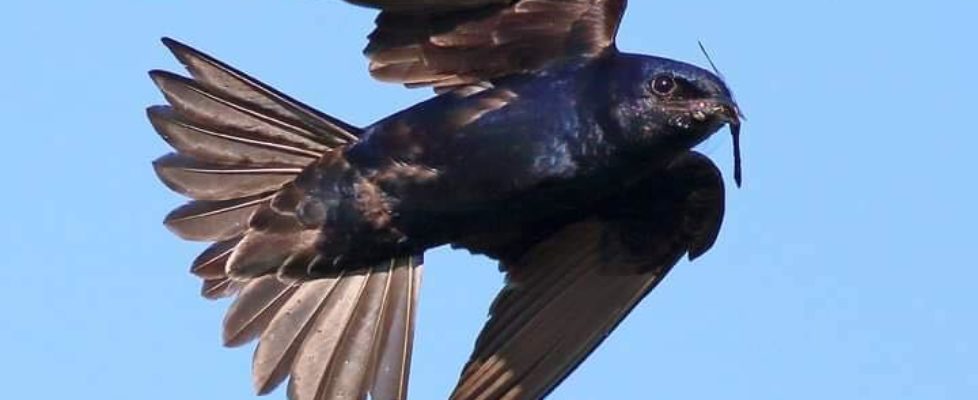Return of the Martin
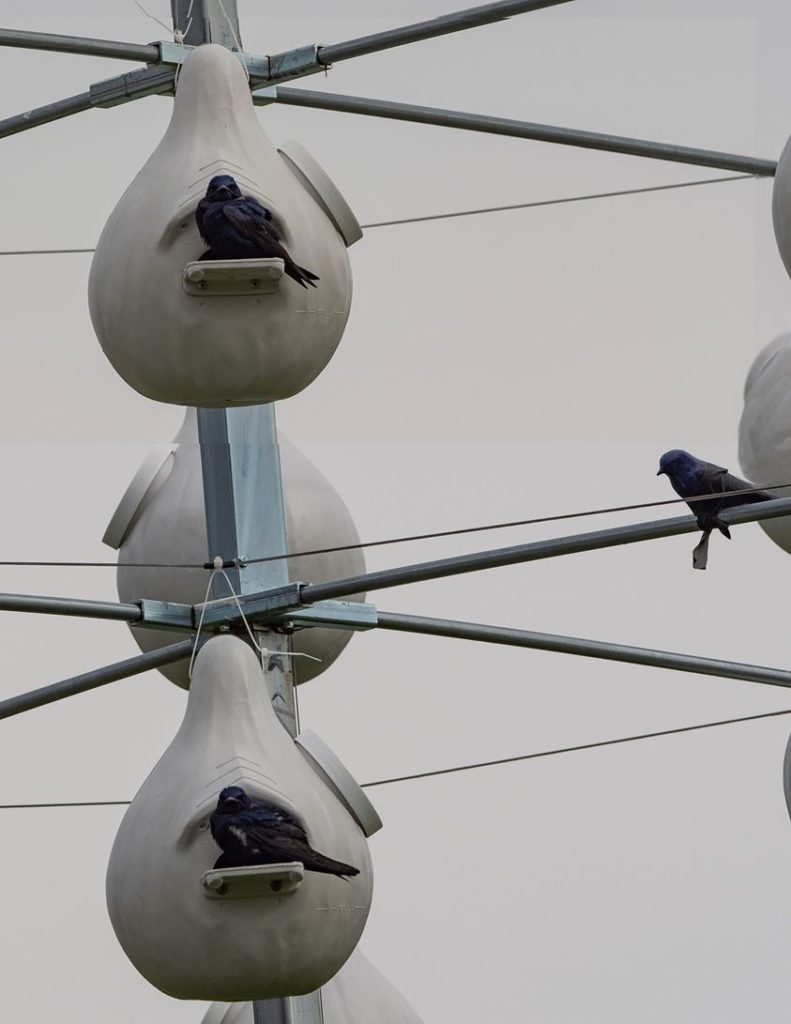
In recent years, condo developments have sprung up all over Westchester. Sometimes it seems that practically every former industrial site, rail yard, or other piece of “empty” land in the area is now home to dozens of new residences—and much controversy. But there is one new housing development that no one is complaining about: The condo that has brought nesting Purple Martins back to Croton Point Park…and to Westchester County.
Purple Martins are cavity nesters that do not excavate their own nest holes, but rely on natural cavities or old woodpecker holes. This habit has created specific and serious challenges to Martin populations, especially in the eastern half of the U.S. Here, the clearing of dead and dying trees and competition from other cavity nesters (especially the invasive and pestiferous European Starling and House Sparrow) has meant the virtual disappearance of sites available to Purple Martins
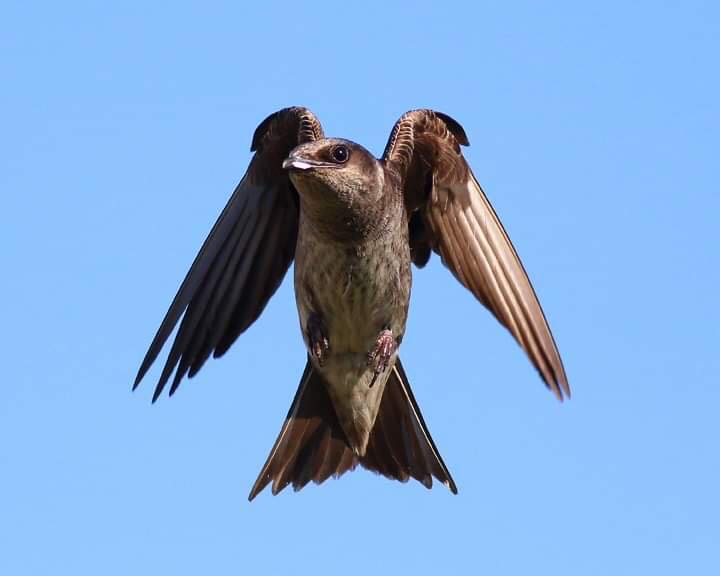
In fact, the species might well have gone extinct in the East if not for one lucky break: The fact that, for at least two centuries, people have created nesting sites for them.
In recent decades, nest boxes set up to attract species under pressure have become a common sight. Most famously, when Eastern Bluebird populations began to decline drastically (again, we can blame invasive bird species as well as other factors) a flood of boxes in parks and gardens helped the species rebound.
Historians have found, however, that Purple Martins’ dependence on human help started long before our current, and more conscious, age. Though historical research on the subject remains patchy, contemporary reports from early in the 19th century show that the Choctaw and Chickasaw peoples hung gourds from poles or other structures in their villages…and that Martins raised their families in them. It is very likely that the tradition dates from long before then.
Why invite Purple Martins to your village? Again, informed guesswork is all we have for now, but it’s possible that that territorial Martins chased away crows, blackbirds, and other possible raiders of crops and nests alike. They might also have served as an early-warning system, raising the alarm when unfamiliar people were approaching.
As for what the Martins got out of the deal, that seems clear: some protection from snakes and other predators, and plenty of bugs stirred up by busy village residents. Some scientists speculate that the gourds might also have provided more spacious nest sites than natural cavities did, allowing Martins to raise larger broods.
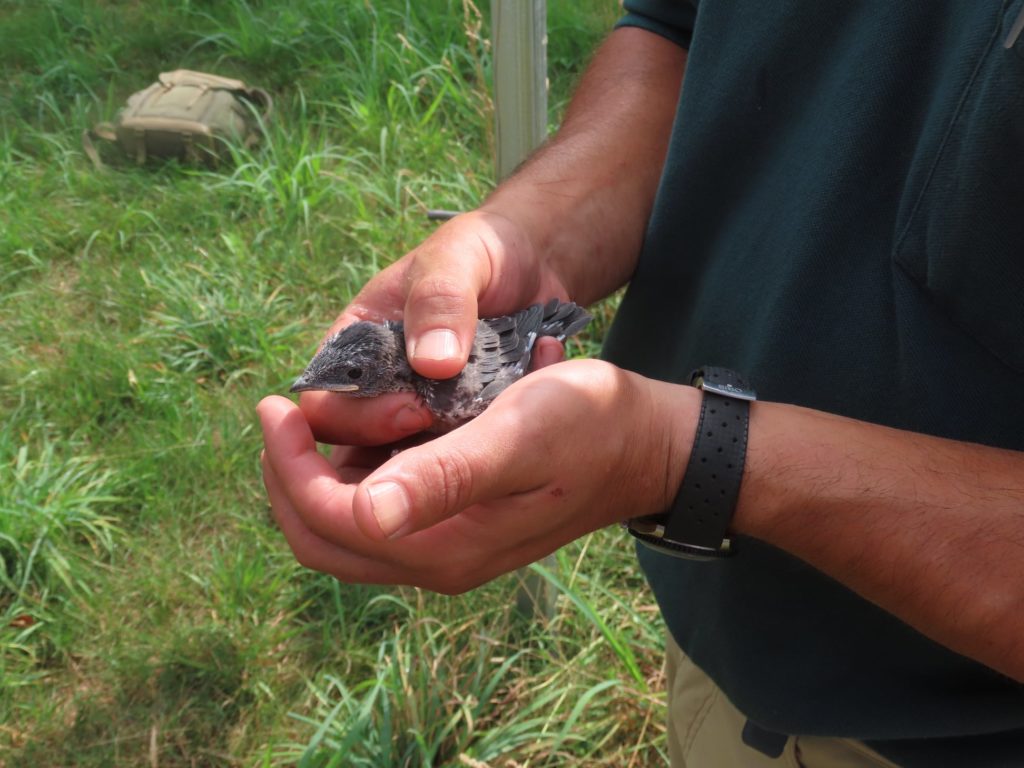
This kind of mutually beneficial connection between wild creatures and humans (such as the one we share with dogs) has happened regularly throughout history. But the complete dependence of Eastern Purple Martins on human-made nesting sites—a phenomenon scientists call “behavioral tradition shift”—is very rare. That makes the installation of nesting sites like the one at Croton Point Park (and another, newer one at Rockefeller State Park Preserve’s Rockwood Hall) even more essential.
The Croton Point Park condo was the brainchild of local birder/naturalist Charlie Roberto, who’d seen Martins nesting along the river in nearby Putnam County but nowhere in Westchester. In March 2017, he suggested that the park could serve as an ideal site. Maybe it could even happen that same spring!
Fortunately, others were quick to agree. John Baker, then Director of Conservation for Westchester County Parks, helped get the approvals and connected the project with the Westchester Parks Foundation for some funding support while Rob Armanini, owner of Croton’s Feed the Birds store pitched in with more funding support. SMRA ordered the materials adding more funding support and Croton Point Naturalist John Phillips coordinated park workers to dig the post hole and then John assembled the entire tower.
Within a month, the nest sites—complete with a plastic martin decoy to attract birds that otherwise might fly past—were ready for occupancy. Several Audubon volunteers even stopped by at first light to play recorded Purple Martin dawn songs for a couple of weeks in hopes of attracting the attention of martins migrating north up the nearby Hudson River.
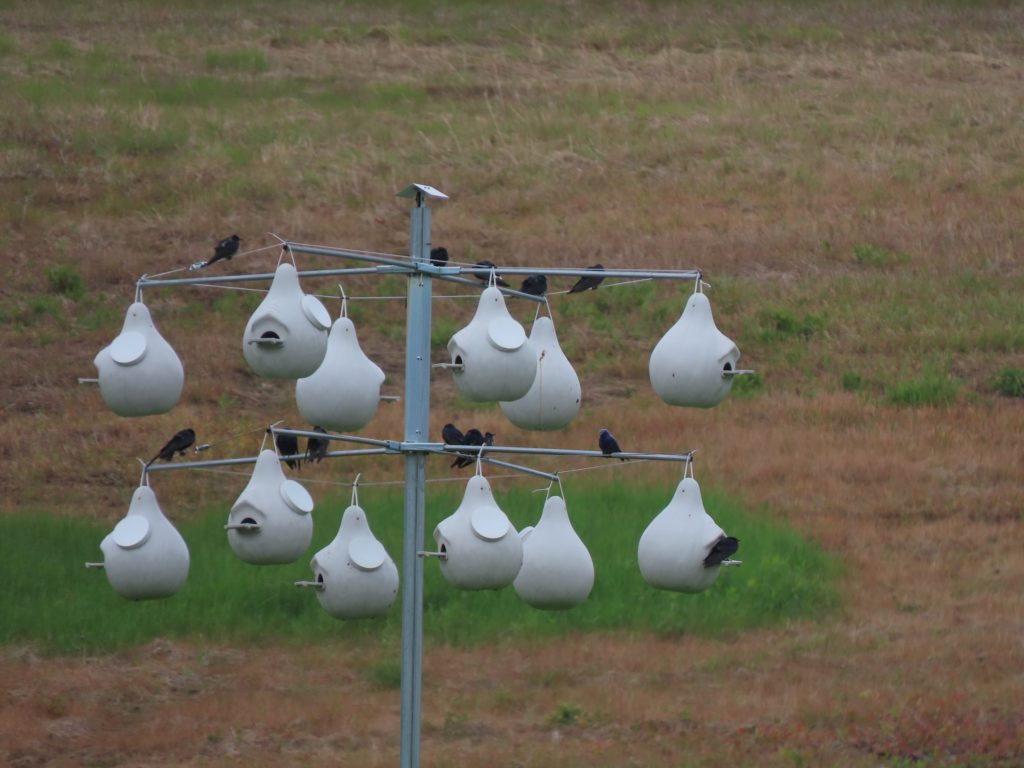
From that very first spring, Martins have nested successfully in the Croton condos. On nearly every visit this spring and summer, I’ve seen several of the glossy purple-blue males and grayish females in or around the nest holes or winging overhead. (Note: Martins in flight look noticeably bigger and stockier than the Tree, Barn, and other swallows that are also common in the park.) Recent observers have counted up to 19 Martins occupying the site, including several fledglings.
In this difficult age, when it sometimes seems that without bad news there would be no news at all, success stories like this one are worthy of celebration. Perhaps a decade from now, Purple Martin condos will stand in parks throughout Westchester, and the birds will have become a familiar sight every spring and summer.
Copyright © 2020 by Joseph Wallace
